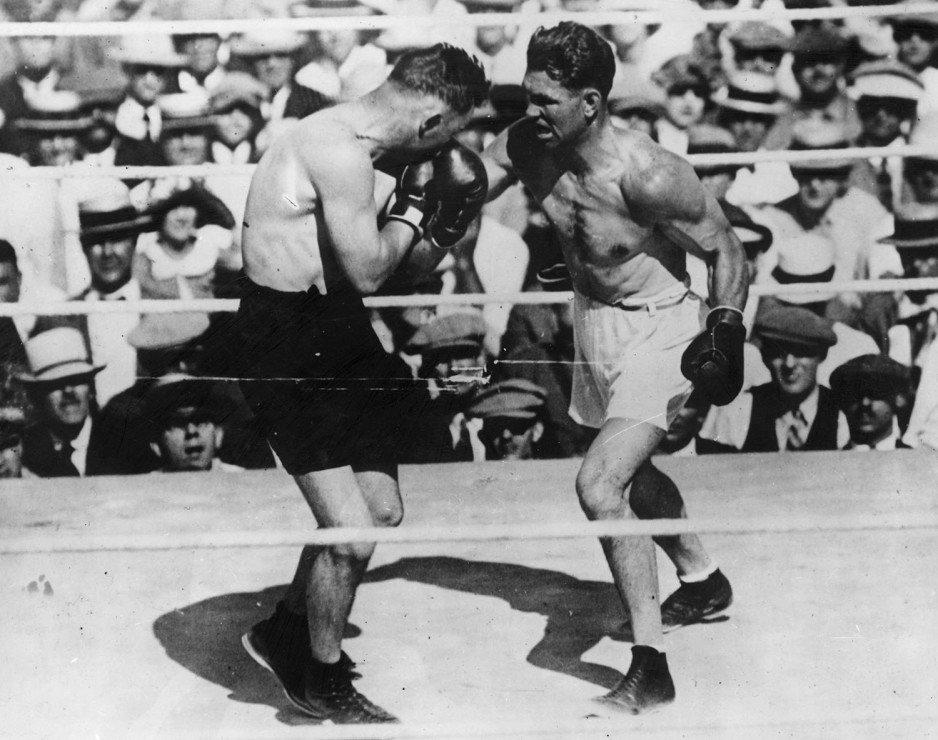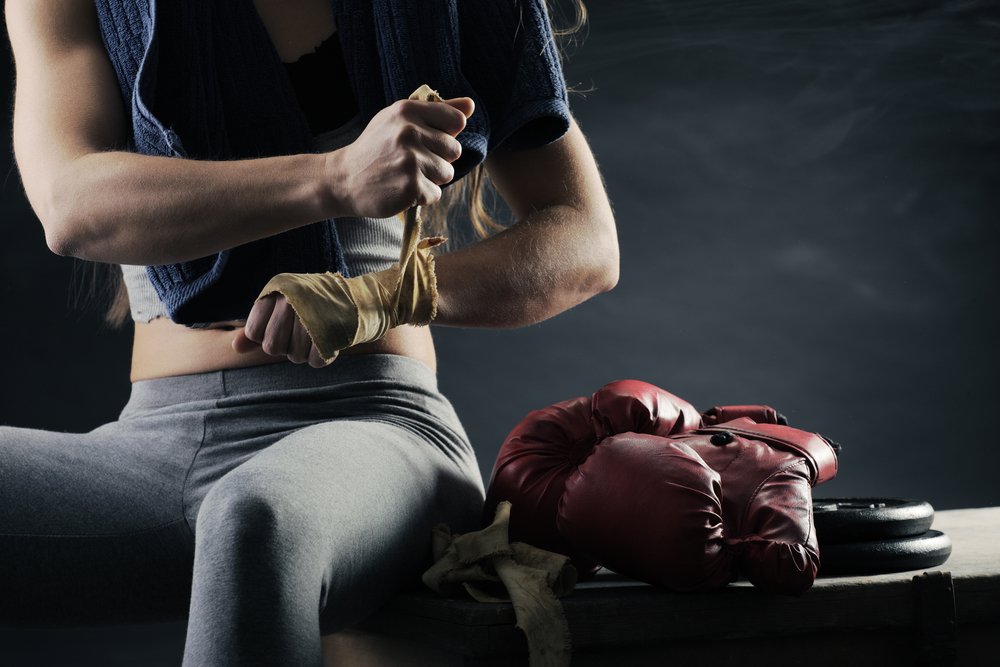
Boxing is probably one of the oldest sports in the world. It did not initially have this name and we then spoke of fist or pancrace. We find combat scenes on works of art from Sumerian and Egyptian civilizations, more than 3000 years before Jesus Christ. Since boxing has obviously evolved a lot, and if English boxing remains the queen discipline, there are many extensions such as French boxing boxing, Thai boxing or even kickboxing.
There is one of many similarities between all these boxes, we fight first one on one, in a ring, and using padded gloves. It wasn’t always the case, and it took hundreds of years of evolution for boxing to become what it is today. Here, I explain everything about boxing, its history, the necessary equipment, and I tell you about the champions who have marked the history of these contact sports.
The history of boxing
The fist: the ancestor of boxing
So about 5000 years ago, men were already provoking a duel, we cannot give with certainty the name of the combat sports of the Egyptians or the Sumerians, but we know on the other hand the fist and the pancrace invented by the Greeks. Rather, the pancrace is associated with wrestling, or maybe even MMA. Indeed, all blows were allowed, except bites and fingers in the eyes. The fighters fought completely naked and without any protection.
It is therefore boxing which is rather the ancestor of boxing, since then only fists were used. We know the very first Olympic champion of the discipline, Onomaste of Smyrna who won his title in 688 BC. The first very great champion will be Tissandre de Naxos who will have won 4 times the Olympic games in fist fight, in 572, 568, 564 and 560 BC. For 800 years, boxing will be a national sport in Ancient Greece.

The fights were particularly violent, and in order to be able to hit harder without hurting themselves, the pugilists protected their fists with leather thongs that the Romans even ended up covering with metal thongs to become circus games, long before the gladiators.
There was no weight category or time limit at the time. No round therefore, and sometimes very long fights. They could only end with a retirement or a knockout. The death of the participants (in the Greek version) was very rare, it was really already a sport, and on the contrary among the Romans, slaves fought with metal gloves which inevitably caused more victims.
When the fight was too long, then we separated the pugilists with the climax. There was a coin throw which determined the first fighter to strike. He was considered the favorite of the gods. It was he who could therefore strike his opponent first without the latter protecting himself or dodging. The other fighter could then hit his opponent in the same way, until one of the two did not get up. We were therefore very far from the point count that we know today.
The beginnings of English boxing
Modern boxing was born around the middle of the 19th century. These are then illegal fights organized by matchmakers, to make bets, and very often the police came to put an end to the fights. In 1865, it was a journalist passionate about boxing who codified the rules of English boxing. There are 15 rules, which are called: Rules of the Marquis of Queensberry. It was indeed thanks to the fame of the Marquis that they were disseminated throughout the United Kingdom, finally entering into force in 1891.
The Rules of the Marquis of Queensberry
Les catégories de poids des pugilistes qui combattront sont les suivantes :
- Heavyweights: over 71.667 kg
- Average weight: less than 71.667 kg
- Lightweight: less than 63.503 kg
- All bouts will take place in a 7.32m ring, on a field or on a platform.
- It is forbidden to wrestle on the ground, to throw oneself or to shoot oneself on the ground. Rounds last three minutes, with one minute rest between each round.
- Each competitor chooses a referee, and the two defined referees will choose a third.
- For all bouts, two people will be in charge of the clock, it is not the referee’s job to check the time
- If a fighter falls because he is injured or tired, or for any other reason, he must get back to his feet without any help. He will have 10 seconds to stand up. His opponent will have to stay in his corner. When the opponent gets up, the fight can resume until the end of the 3 minutes of the round. If he does not stand on these two legs within the allotted time, his opponent is declared the winner.
- When a boxer against the ropes does not touch the ground, he is judged “down” by the referee. No one can step into the ring to help him.
- If the fight is stopped by any incident, the referee or the betting agent designates the place and date of a next meeting to end the fight. It should take place as quickly as possible.
- If a fighter falls under the blows of his opponent during the fight, during the last 10 seconds of a round, then we can help him get up to resume.
- There is a minute’s rest between each round, no hits will be allowed during this rest period.
- Gloves must be of good quality and perfectly new. If one of the gloves becomes damaged or becomes detached from the boxer’s hand, it can be replaced at the discretion of the referee. Shoes with studs are not allowed in the ring. A fighter who drops to one knee will be counted. His opponent must not hit him at this point, otherwise he will lose the reward. You don’t hit a man down.
- For all the fights, the sum acquired during the bets will be paid only after the result given by the referee. If one of the boxers leaves the fight without explanation, and especially without asking the referee for a break, he is designated the loser.
- He will also lose the fight if he leaves the ring before the referee has given his decision.
- The seconds of the boxers will have nothing to say to the referees during the match; they must behave with dignity while respecting the sport, and their advice or observation during a fight will not be welcome. A referee can stop a fight if he does not consider himself respected.
- If one of the fighters, to avoid the fight, throws himself to the ground when he has not really received any blow, whether the fight is in the first or the last round, he will be declared the loser. However, if he falls while avoiding being held down by his opponent, then the fight can continue. The sum of the bets is kept by the organizers until the announcement of the result, unless the judges are not all of the same opinion. In case of postponement of the fight, if one of the competitors does not come, the boxer present in the ring will collect the reward without fighting.
- In a match where the number of rounds is stipulated in the debate, the referee will have the possibility of adding additional rounds to the fight until one of the two boxers is no longer able to fight or gives up.

Thanks to these rules, fights are less brutal, but faster and more interesting to watch. The technique improves and gradually what was an illegal betting game is becoming a recognized sport. Boxing is even becoming one of the first professional sports of the modern era. The English boxing we know today was born.
Different types of boxing
Obviously, we cannot reduce boxing to English boxing . In different countries, the developments were numerous, and today there are many types of boxing on every continent of the world.
French boxing
French boxing or French boxing savate appeared in the middle of the 19th century in France. The savate was initially a street fighting technique to defend oneself in Paris. The city is then dangerous and it is preferable to know how to defend yourself. We hit then especially with the legs and the fighter, is called “shooter”, as in fencing. The punches of English boxing will be added naturally, and French boxing will become the kicking sport in Europe! We tell you everything you need to know about our special French boxing file .
Thai boxing
If we were already fighting in Europe thousands of years ago, it was also the case in Asia. Thai boxing takes its origin from some ancestral martial practices such as muy boran or krabi krabong. For a long time, Europeans feared this type of boxing which they considered to be without rules and too dangerous, then by taking a closer look, they understood the codification, the rules and especially the fact that it is more than a simple sport but also a way of life. The whole body is used like a weapon, and one can strike with the feet, the fists, but also the elbows and the knees. Click here to discover our complete file on Thai boxing .

Kickboxing
Kickboxing is much more recent, since it was invented in the early 1960s in the United States. It is ultimately a mix between English boxing and French boxing, with karate-inspired kicks. There is also Japanese kickboxing where knees and elbows are allowed. It is in this last discipline that we find the greatest emulation, with in particular tournaments very known in the world as the K-1 Wolrd Grand Prix or the K-1 World Max. To learn more, check out our full kickboxing feature .
Boxing equipment
If in the past the pancrace was practiced completely naked, we have become a little more modest in our time and we also protect ourselves to hurt ourselves less or to hurt our opponents less. Obviously, for each discipline we will find different outfits or equipment, so here is what to plan for depending on the type of boxing chosen.
Gloves
Obviously, for all types of boxing, gloves are the working tool of a professional boxer, and the essential accessory for all fighters, even amateurs. They are useful and effective both in attack and defense. Gloves protect the boxer’s hands, but also prevent too much damage to his opponent.
They are broken down into 3 parts: The thumb, the wrist, and the hand with the fingers. The fingers are protected from the first phalanges. They are the ones who are going to hit and therefore there is a particular padding at this level. The thumb is attached to the rest of the hand to prevent it from ending up in the opponent’s eye and also so that it does not turn around during an awkward gesture. Finally, the wrist is reinforced. It is useful in defense when our attacker slaps our arms, and by tightening the gloves well we prevent a rotation and a sprain of the wrist.
Gloves are always made of leather, whether natural or synthetic. Some will be more or less padded than others and depending on your weight you will choose a glove size or rather a glove weight. We define the glove in ounces. The heavier we are, the more we will need heavy and protective gloves.
Bandages
Who says gloves, says obligatory bandages or mittens. In combat, bandages are compulsory. They are surgical bands 2 m long and 4 cm wide. These bands will protect the hands from injuries to the metacarpals. They also have a hygienic role since they will prevent boxers from sweating in their gloves and therefore quickly smelling very bad. We can train without a bandage or without mittens, but our gloves will be damaged more quickly.

Mouthguard and shell
Certain areas of the body are particularly sensitive and they must therefore be protected as much as possible. The mouthguard is mandatory in competition, regardless of the type of boxing. It is also essential during training. It does not just protect the teeth, but also the tongue or the cheeks that you can bite violently when you receive a bad blow.
The shell helps protect the genitals which are obviously very sensitive. Again, it is mandatory in combat, but it is also highly recommended during training. An unintentional low blow happens quickly, and without protection this kind of blow can cripple you for several hours. The shell is also effective for women, whose genitals are just as sensitive and fragile as for men. For these ladies, there are also chest protectors.
Safety helmet
The helmet effectively protects the head and face. It is compulsory in amateur boxing combat in most disciplines in France, the rules are then different depending on the country. For training, it is not necessarily always mandatory, but it saves you from coming back to work the next morning with a blue eye or a crooked nose. It is an accessory that lasts between 5 and 10 years if you take good care of it, so I think there is no real reason to go without.
We will be able to work our sequences with power on a sparring partner and he will be able to respond without risk of hurting us.
Different equipment depending on the discipline
Then, there are many additional accessories according to the different types of boxing. French boxing shoes, for example, are approved and perfectly suited to kicks. There are also shin guards to absorb blows and train more serenely.
Of course, there are also special outfits, such as boxing shorts, or Thai boxing shorts. Or training accessories such as punching balls or punching bags, necessarily essential for your training.

